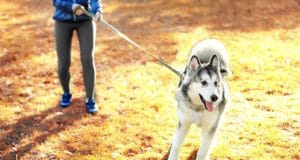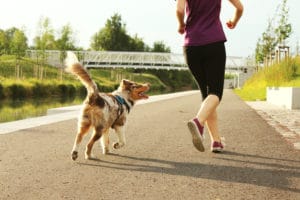I get many questions about how the fulfillment formula – Exercise, Discipline, then Affection – changes as the dog age and doesn’t require as much physical activity and energy draining. Here are some tips to keep in mind as your dog enters his senior years.
I always stress how important it is to get a dog that fits your energy level and lifestyle, but at some point, even the highest-energy dogs that are in great health will slow down as they enter their senior years.
Nothing is more important than prevention, so it’s vital that you provide exercise, a nutritious diet, and supplements as needed and recommended by your vet throughout your dog’s life. Alternative medicine treatments, like acupuncture, are becoming increasingly popular for all kinds of conditions, especially arthritis, which is common in older dogs who have been very active.
Swimming is an excellent activity for dogs of all ages, but it is particularly good for older dogs because it is low-impact and easy on their weakening joints and muscles. Swimming also builds strength, is suitable for their conditioning, and is naturally relaxing and comforting to most dogs. Also, consult your vet about the best joint health supplement for your dog. I recommend Vetz Petz Antinol because it contains a unique PCSO-524, which has been scientifically and clinically tested and proven to support joint health.
When we think of aging, we think of medical conditions. But for many dogs, they age without any sign of illness at all. When Daddy was a senior, he had minimal physical desires. He would get tired walking from my house to the neighbor’s house – it was like walking miles and miles for him – and we celebrated that walk the same way we did when he was younger, and we’d return from a two-hour Pack Walk.
As he aged, it was not so much about the time spent walking but about allowing him to stay where he wanted to be. This was his revised fulfillment formula. Daddy still wanted to be outside and experience nature, but he didn’t need to do it with the one, two, and three-year-old pups. He could do it right in the backyard.
Tailoring the fulfillment formula as a dog ages to fit his needs is something that many humans have a hard time with. It’s no different than the fears we have about aging as humans. But this is a natural part of life, and honoring that life is keeping your dog.
You don’t have to feel like you’re no longer giving the dog rules, boundaries, and limitations if you, for example, bring them their food instead of making them come to the kitchen or the yard to eat. “Room service” at this stage of life is acceptable. Remember that their body doesn’t match the mind anymore – they might have trouble controlling their bladder, which isn’t something to punish. It results from the kind of care we provide our dogs in this country and worldwide. You’re not going to see a 14-year-old dog in a third-world country very often; they don’t have the same kind of care and nutrition.
Remember that you don’t need to provide stimulation at this senior stage of life. What you want to provide is relaxation. Give the dog a massage, help them when they need it (like using a ramp as you would for an older person who has difficulty getting upstairs), and be patient. Enjoy this time and celebrate their life!
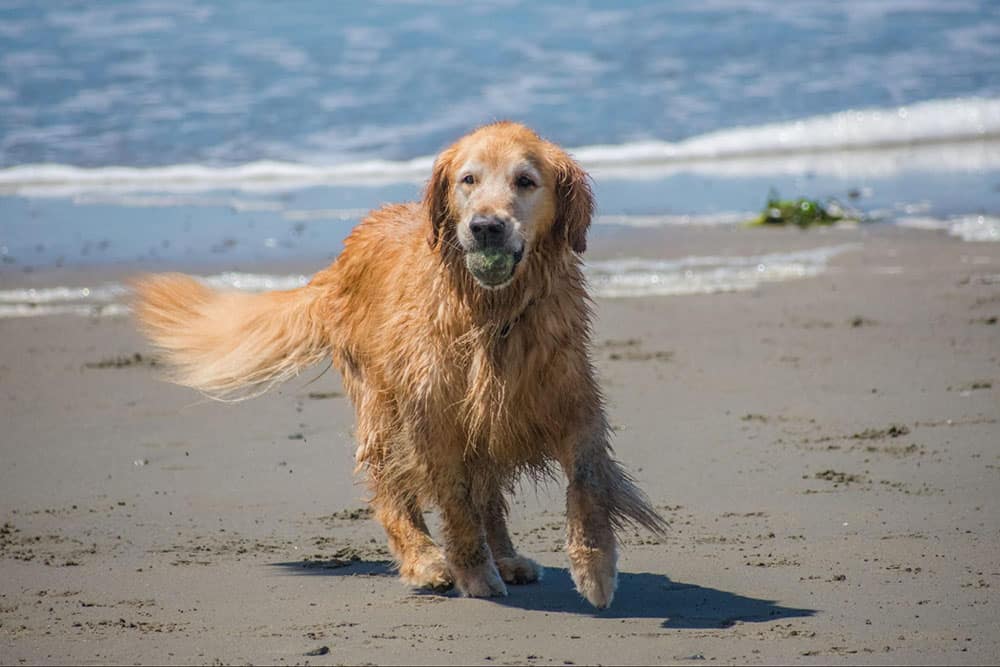
Understand Your Dog's Mobility
Sadly, witnessing your young pet age and struggle to move is disheartening. However, mobility issues are not necessarily an excuse for giving up on them. Elderly canines can and should still experience rewarding lives, even though they may experience challenges getting around. Provided proper maintenance and upkeep, a senior dog’s lifespan can be prolonged rather than cut short in the presence of mobility predicaments.
Signs of Decreased Mobility in Senior Dogs
- Struggles to jump and climb
- Shows stiffness or pain
- Slowed walking or limping
- Slips when walking around or getting up
- Struggles to sit and stand
- Timid to participate in usual activities
- Favors a limb
Tips for Exercising Senior Dogs
It’s essential to remember that as dogs age, their needs change; they need shorter but more frequent sessions of gentle exercise tailored to their overall health and ability.
Get the OK
Initially, visit your vet. Your senior pooch requires a complete physical exam to ensure he is fit enough for escalated exercise. Before adjusting your pup’s lifestyle, serious metabolic disturbances such as heart conditions, diabetes, and aging difficulties like osteoarthritis need to be disregarded or regarded as causes of inactivity.
Choose Lower Impact Activities
Exercising is essential for senior dogs both to keep them physically active and help with common age-related ailments. However, their ability to perform vigorous or high-impact exercises may diminish as they age. This makes it important to prioritize low-impact activities that are easier on their joints and muscles while still providing the benefits of physical activity. Examples include:
- Walking
- Swimming
- Brain games
- Balance exercise
- Nose work
Walking a Senior Canine
Going for a walk is an exceptional, mild-intensity exercise that benefits your pup’s physical and mental well-being. As your canine companion grows older, you need to consider how fast you walk, the climatic conditions, and how your dog appears to feel during and after exercise. Elderly canines are particularly receptive to changes in temperature—either excessively hot or cold—so taking steps to ensure they are comfortable during your stroll is essential. Please take note of the weather and period of the day to stop them from being subject to overheating or frostbite. If you observe that your pup is sore after the stroll, you may want to backtrack (literally!) and cut down on the duration of your trips.
Incorporate Fun and Games
Senior canines can still have fun, and all you need to do is adjust the activities for their tender joints and slower reflexes. Here are some game ideas you can start playing with your older dog today.
- Hide-and-seek
- Fetch (shortened)
- Three cups and a treat
- Water games, especially fun in the summer!
Take Breaks in Between Exercises
Exercising a senior dog requires more caution and gentleness to prevent possible injury and fatigue. Older canines should not be pushed too hard, as they may not have the same energy they did when they were younger and more energetic. It is essential to give the older dogs plenty of breaks to catch their breath between exercises, preferably in a cool, shaded area away from direct sunlight.
By monitoring how far your senior dog can go without appearing tired or stressed, you’ll know when it’s time for them to take a break and restore their energy levels. This way, appropriate exercise can still be had while keeping your older dog safe and comfortable.
Mix Things Up
Maintain your canine companion intellectually engaged and animated, as well. Always walk different paths. Don’t consistently entertain the same activities:
- Teach a new trick
- Meet new dog friends
- Buy other toys and switch them out
- Check out the local dog park
Warm Up & Cool Down for Outdoor Exercises
Warming up and cooling down is an essential part of outdoor exercise for senior dogs. Gradually increasing your pup’s activity in a controlled setting will help them safely get their body temperature up and prepare their muscles, tendons, and ligaments for activity. It’s essential to give your dog time to cool down after they’ve also finished exercising, and this can help speed up the recovery process and reduce any aches or pains afterward. Slowing down gradually when you’re done with your walk is a great way to ensure your senior pup has the best outdoor experience!
Create Indoor Exercise Routines
Indoor exercise options, such as interactive playtime, playing mentally stimulating games, stretching, and introducing scenting activities, can all help to keep senior canine companions in shape without putting undue strain on their aging bodies.
Cross-Training Senior Dogs
Cross-training enables certain body parts to relax as you concentrate on making muscles in different places. Canine yoga, doggy Pilates, and other activities are soaring in popularity due to their countless mental and physical advantages to dogs of any age.
Safe Swimming for Senior Dogs
Suppose you have access to a place to swim that allows canines, it is the perfect way to get a workout. Swimming is lightweight on the body, particularly the joints, yet maintains its status as a powerful total-body exercise. Swimming provides a secure, simplified approach to permitting your dog to add strength to the body without discomforting the bones and joints.
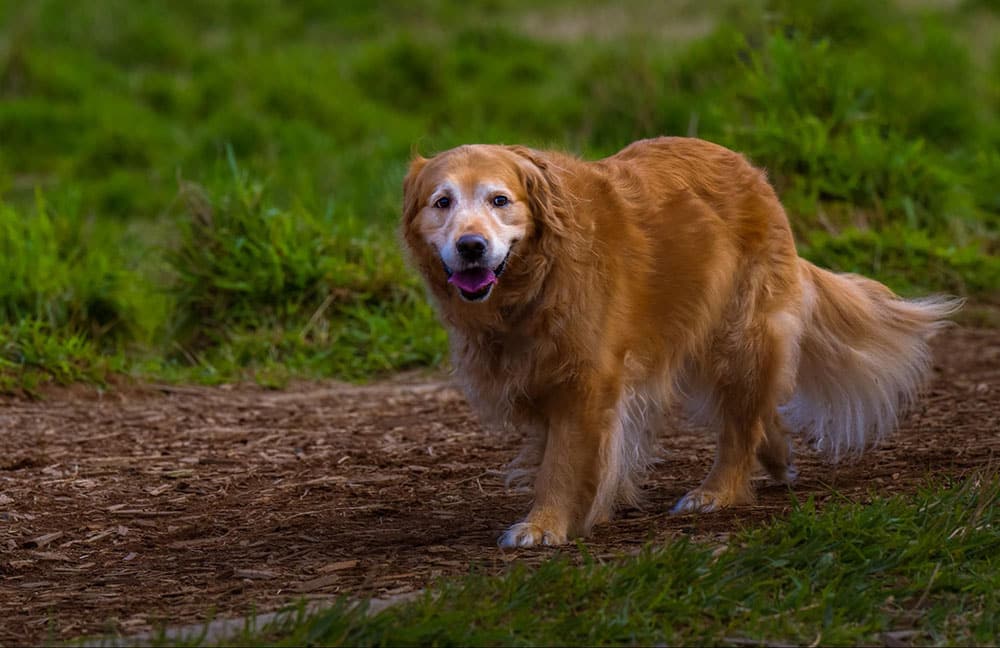
Monitor Senior Dog Exercises Closely
Do NOT Push Your Older Dog Through Pain
It would be best if you had a conversation with your veterinarian about the measures you can take for pain management. The fact is that dogs are not usually vocal about their chronic distress; they go on as usual. Consequently, it is in your hands to be aware of the indicators.
Reevaluate the Exercise Program
Continually modify and adapt any exercise regimen to your dog’s specific situation and changing capabilities. If it means your canine gets tougher and can do more or becomes weak and needs to do less. Ultimately, the objective is to delight in one another’s companionship and have a good time while striving for a healthier senior dog.
Signs of Too Much Exercise for a Senior Dog
- Excessive breathing or salivating, mainly if their tongue/gums are a strong red or blue. Dogs pant in warm temperatures, which is used to cool Fido down, but it is not appropriate to work out with any dog outside when it is hot, especially an elderly one.
- Sneezing or wheezing. This can indicate cardiac ailments, pulmonary issues, or something called ‘Tracheal Derangement’ (usually frequent in smaller breeds). Constant coughing can create respiratory troubles, so if your senior canine begins to cough while working out, it’s time to bring the session to a close.
- Slowing down or wanting to stop playtime. This is a definite cue that your elderly canine has had enough for the day, and it’s time to rest.
- Limping or weak limbs. You must immediately stop when an aged dog favors a single limb during physical activity. If the pain does not resolve within a day (or if it does but then reappears), you need to take your pooch to the veterinarian to ensure there isn’t any severe injury or irritation.
The Importance of Senior Dogs Remaining Active
Caring for a senior dog is a special way to pay homage to their years of loyalty and love. For an older dog to remain healthy and happy, it is essential to find ways for them to stay active. Daily exercises such as playing fetch or brisk walks will help keep bones strong and joints limber. Even indoor activities like hiding treats around the house can provide mental stimulation and entertainment. Not only will exercise support your senior dog’s physical well-being, but it can also keep them mentally sharp while they age gracefully.
